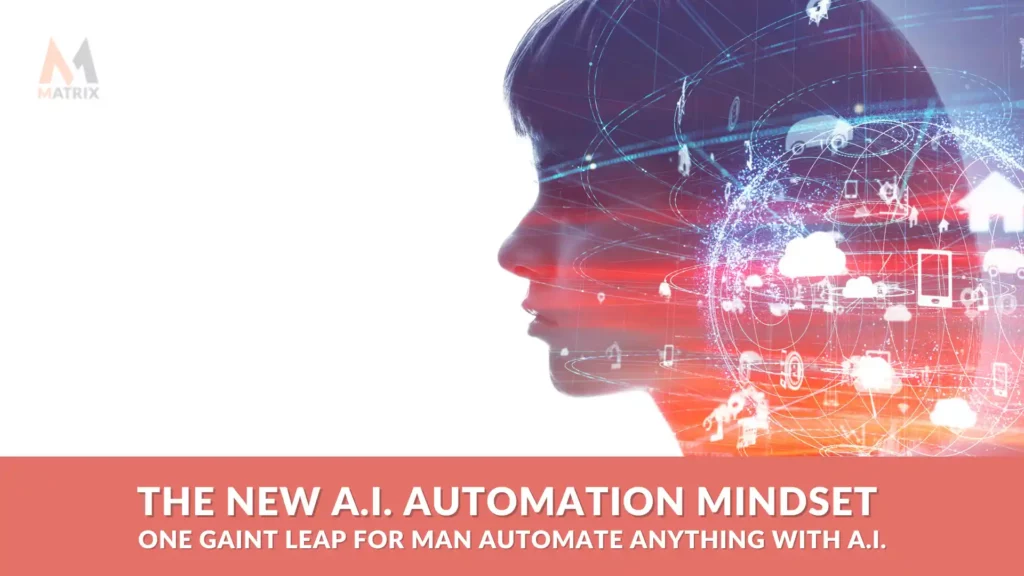The New AI Automation Mindset: One Gaint Leap For Man Automate Anything With AI.
Learn About The New AI Automation Mindset: One Gaint Leap For Man Automate Anything With AI.
Madison was a well-renowned CEO of a technology company that was always at the forefront of digital innovation. She had been reading an article in the Wall Street Journal about AI and what it could mean for their business when she suddenly had an idea: why not bring AI into her own company?
She quickly researched and discovered Matrix Marketing Group, a Google-partnered agency specializing in AI-driven digital marketing. Excited at the prospect of leveraging this new technology to improve her business, Madison raced down to Jess’s office—the COO—and asked if she’d read the articles, too.
Jess nodded eagerly, intrigued by what this could mean for their business strategy. Together, they decided to use Matrix Marketing Group’s services and began planning to integrate AI into their operations.
Soon enough, with help from experts at Matrix Marketing Group, Madison’s team successfully implemented an automated mindset across all areas of their culture that allowed them to become far more efficient than ever before, with data-driven decisions leading every step forward.
Madison knew then that embracing AI within her company would open up countless possibilities for growth and success; it was worth pursuing, after all!
AI is HOT, but a word of caution test and iterate if you do it yourself or get an expert. You can cause more damage to your brand if you are not careful.

As Chief Marketing Officer, you are uniquely positioned to drive marketing success and be the leader of an organization that uses automation as an advantage.
However, this requires knowing how to take advantage of digital transformation opportunities with the right mindset about automation.
With the dawning age when anyone can automate anything with AI and machine learning, it’s never been more important for CMOs to get ahead of their competition through technology-driven innovations.
The New Automation Mindset: The Leadership Blueprint For An Age When Anyone Can Automate Anything With AI is here to help!
Learn key concepts and industry best practices from experts on leading an organization powered by new automation outlined in this guide.
It’s time to develop your strategy before it’s too late – discover why understanding the implications of automation is essential for business success today!
Introducing the New Automation Mindset

The age of manual labor is long gone. We are now living in the era of automation. It’s time to step up and adopt the new automation mindset.
The possibilities of automation are endless; embracing it can revolutionize our work. Automation can increase our operations’ efficiency, reliability, and accuracy and improve our bottom line. We must be able to afford to be included in this new wave of technology.
Initiating the automation mindset today is the only way to stay competitive in the market tomorrow. It is time to revolutionize your business.
Don’t dive into A.I. now if you do not change your mindset. It’s moving quickly, but we recommend seeking the benefits of A.I. and getting Matrix Marketing Group involved now. They are the world’s leading AI digital marketing agency.
Sure, you need tons of technical knowledge to realize its full potential. But jump on, and you will see your competitors in your review mirror of your new Polarstar 3. Here’s what it takes.
The “New Automation Mindset” refers to a shift in how businesses and individuals perceive and implement automation. This perspective is shaped by technological advances, changing business environments, and the evolving needs of the workforce.
Here are the key characteristics of this mindset:
- End-to-End Automation: The new mindset is automating individual tasks and streamlining workflows and business processes. It’s about identifying opportunities for automation across the entire spectrum of business operations.
- Human and Machine Collaboration: The new mindset recognizes that automation is not replacing humans but enabling them to work more efficiently. It emphasizes the synergy between human creativity and machine efficiency.
- Continuous Learning and Adaptation: The new mindset recognizes that automation is a journey. As technology evolves and business needs change, automation strategies must be continuously evaluated and updated.
- Data-Driven Decision-Making: The new mindset leverages the power of data. Automation tools can gather and analyze vast amounts of data to provide valuable insights and inform business decisions.
- Democratization of Automation: The new mindset acknowledges that automation should not be confined to IT departments. Low-code and no-code tools enable non-technical staff to implement automation in their areas, thereby democratizing the process.
- Focus on High-Value Tasks: The new mindset prioritizes automating repetitive, time-consuming tasks to free employees to focus on high-value, strategic tasks requiring human insight and creativity.
- Customer-Centricity: The new mindset emphasizes that the ultimate goal of automation is to enhance customer satisfaction. This can be achieved by using automation to deliver faster, more personalized, and higher-quality service.
- Ethical and Responsible Automation: The new mindset acknowledges the ethical implications of automation. It encourages businesses to automate responsibly, considering factors such as job displacement, privacy, and security.
- Embracing Change and Innovation: The new automation mindset promotes a culture of innovation, experimentation, and adaptation. It encourages organizations to be agile and flexible in the face of change.
- Long-Term Strategic Planning: Rather than ad hoc automation of individual tasks, the new mindset encourages a strategic approach, considering the organization’s long-term goals and vision.
The Benefits of Re-Imagining Automation

The world is changing rapidly, and businesses must adapt. Automation has been a part of this adaptation, but it’s time to shift our thinking and re-imagine what automation can do for us. The benefits are immense, from increasing productivity to reducing manual errors and streamlining processes.
But it’s not just about efficiency. With re-imagined automation, companies can empower their employees to work smarter, not harder, and free up their time to focus on creativity and problem-solving.
AI automation brings numerous benefits across various sectors and industries. Here are some key benefits:
- Increased Efficiency: AI automation can streamline operations, reduce manual tasks, and speed up processes, thereby significantly increasing efficiency.
- Cost Savings: AI can help reduce labor costs and other operational expenses by automating routine tasks. Also, AI-powered systems can often operate around the clock, increasing cost-effectiveness.
- Improved Accuracy: AI systems can perform repetitive tasks with high precision and consistency, reducing the risk of human error.
- Enhanced Decision-Making: AI can analyze vast amounts of data quickly and accurately, providing insights to enhance decision-making. This can lead to better business strategies and outcomes.
- Scalability: AI automation allows businesses to scale operations without a corresponding increase in manpower or costs. As business needs change, AI systems can easily adapt to handle increased volume or complexity.
- Improved Customer Experience: AI can power chatbots, virtual assistants, and personalized recommendations, enhancing the customer experience by providing quick, personalized responses and services.
- 24/7 Availability: Unlike humans, AI systems can work round the clock, providing services and support at all times.
- Predictive Capabilities: AI can analyze patterns and trends to predict future behavior or events. This can be particularly useful in sales forecasting, predictive maintenance, and risk management.
- Increased Productivity: By automating routine tasks, AI frees employees to focus on more strategic, creative tasks that add greater value to the business.
- Innovation: AI can drive innovation, opening up new possibilities for products, services, and working methods.
It’s important to note that while AI automation brings numerous benefits, it also poses challenges that must be managed, such as ensuring data privacy and security, managing job displacement concerns, and addressing ethical considerations.
It’s time to embrace the power of re-imagined automation and unlock the potential of our businesses. The future is now, so let’s start re-imagining today.
Setting Up Your Leadership Blueprint for Automation
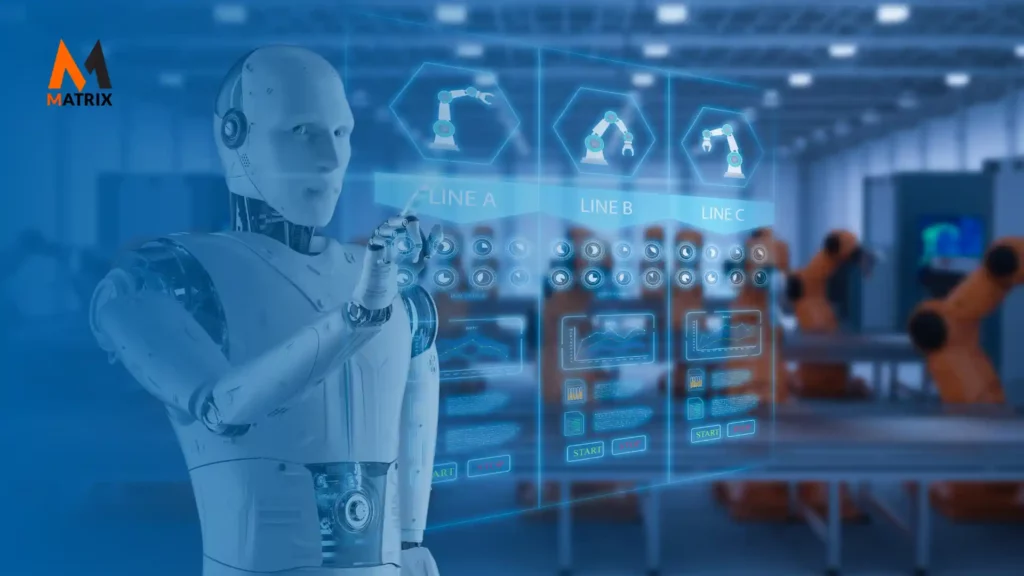
As we dive deeper into automation, having a solid leadership blueprint to navigate this terrain with confidence and authority is crucial. A well-established blueprint will establish a successful automation strategy and ensure your team is aligned and informed at every step.
With the pace of technological advancement and the industry’s growth, time is of the essence. Establishing your leadership blueprint now will save you time and money in the long run and guarantee that you stay ahead of the curve and remain competitive.
What skills do my staff and company need to implement an automation and AI mindset?
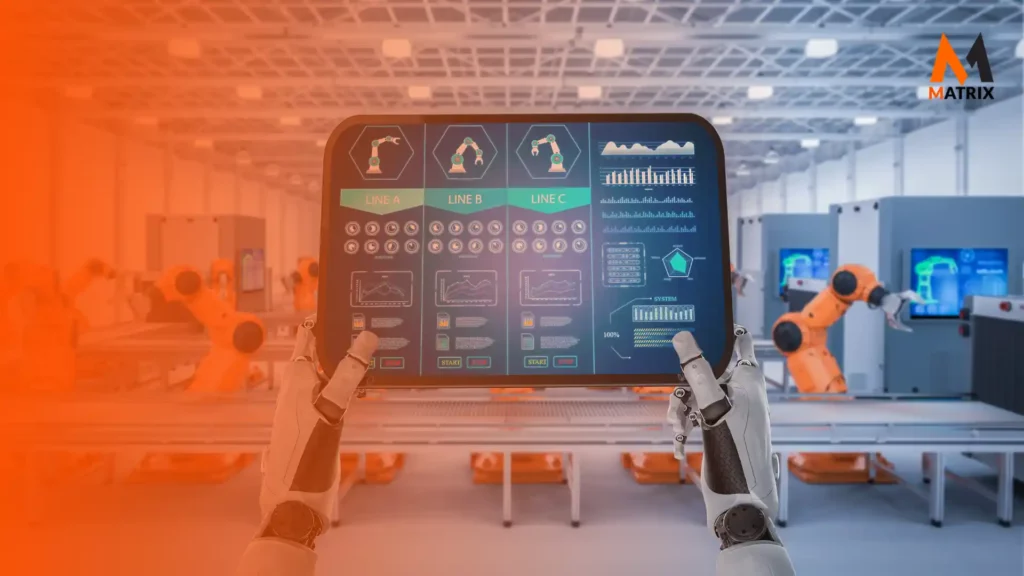
Implementing an automation and AI mindset requires combining technical, analytical, and soft skills. Here are some of the key skills your staff and company need:
Technical Skills
- Programming and Coding: Understanding programming languages like Python, R, or Java can be beneficial, especially when working with AI systems.
- Understanding of AI and Automation Technologies: This includes knowledge of Machine Learning, Robotic Process Automation (RPA), Natural Language Processing (NLP), and other relevant technologies.
- Data Analysis and Management: The ability to work with and manage large datasets is crucial, as AI and automation often involve analyzing and interpreting data.
- Systems Integration: Knowing how to integrate various systems and technologies is important, as automation often requires different systems to work together seamlessly.
2. Analytical Skills:
- Problem-Solving: Implementing AI and automation solutions often involves troubleshooting and problem-solving, particularly when integrating new technologies into existing processes.
- Process Analysis: Understanding how processes work and how they can be improved is crucial for successful automation.
- Statistical Analysis: AI and Machine Learning often involve working with statistical models, so understanding these is beneficial.
3. Soft Skills:
- Change Management: Implementing new technologies can be disruptive, so knowing how to manage change effectively is important.
- Communication: Clear communication is crucial in explaining complex concepts to non-technical team members and understanding the needs and concerns of various stakeholders.
- Creativity and Innovation: Implementing an AI and automation mindset involves creatively improving processes and solving problems.
- Adaptability: Technology constantly evolves, so adapting to new tools and approaches is key.
- Strategic Thinking: Implementing automation and AI isn’t just about the technology. It’s also about understanding how these technologies can support the company’s strategic goals.
4. Leadership Skills:
- Vision and Strategy: Leadership should be able to provide a clear vision and strategy for how AI and automation will be used within the company.
- Project Management: Implementing AI and automation often involves managing complex projects, so strong project management skills are essential.
- Team Building and Development: As new skills are needed, leaders should focus on building and developing teams to implement and manage AI and automation technologies.
5. Lifelong Learning:
- Continuous Learning: Technology is always changing, so ongoing learning is necessary. This includes staying up-to-date with the latest advancements and trends in AI and automation.
In addition to these skills, fostering a culture that is open to change, encourages innovation, and values continuous learning is important. This can help your company adapt more readily to new technologies and working methods.
So, let’s roll up our sleeves and build an automation blueprint to set us on the path to success.
Evaluating Resources For AI-based Automation
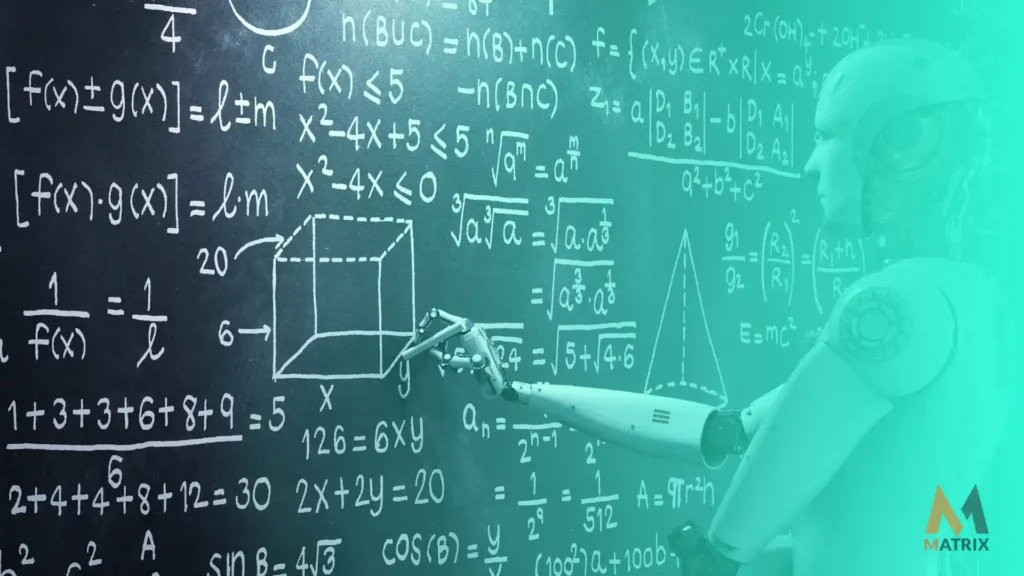
Businesses increasingly seek to automate their processes to improve productivity and save costs. Many are turning to artificial intelligence (AI) to achieve this goal. Still, with so many resources available, it can be challenging to determine which ones are best suited to their specific business needs.
Evaluating resources for AI-based automation is crucial to ensuring success in this area. With a confident and authoritative approach, businesses must prioritize this task with an urgent sense of purpose.
By evaluating resources carefully, businesses can ensure that they make informed decisions that lead to improved efficiencies, reduced errors, and, ultimately, significant cost savings.
Here are some steps to evaluate resources for AI-based automation:
- Identify the business needs. What are the specific tasks or processes that you want to automate? What are the goals of automation?
- Assess the current state of automation. What tools and resources are already in place? What are the gaps in automation?
- Research and evaluate AI-based automation resources. There are a variety of AI-based automation tools and resources available. It is important to research the different options and evaluate their features, capabilities, and costs.
- Develop an implementation plan. You must develop an implementation plan once you select an AI-based automation resource. This plan should include a timeline, budget, and resources required for implementation.
- Implement the AI-based automation resource. Once the plan is in place, you can implement the AI-based automation resource. This process may involve training employees on how to use the new tool, testing the tool, and making adjustments as needed.
- Monitor and evaluate the results. Once the AI-based automation resource is in place, monitoring and evaluating the results is important. This will help determine if the resource meets your expectations and delivers the desired results.
Here are some additional tips for evaluating resources for AI-based automation:
- Consider the specific needs of your business. Not all AI-based automation resources are created equal. It is important to select a resource that is tailored to your specific needs.
- Look for scalable resources. As your business grows, you may need to scale up your AI-based automation capabilities. Make sure that the resource you select can be scaled up as needed.
- Consider the cost of the resource. AI-based automation resources can be expensive. Make sure to factor in the cost of the resource when making your decision.
- Get buy-in from stakeholders. AI-based automation can have a significant impact on your business. It is important to get buy-in from stakeholders before implementing an AI-based automation resource.
By following these steps, you can ensure that you are selecting the right AI-based automation resources for your business.
Using AI to Simplify and Streamline Processes
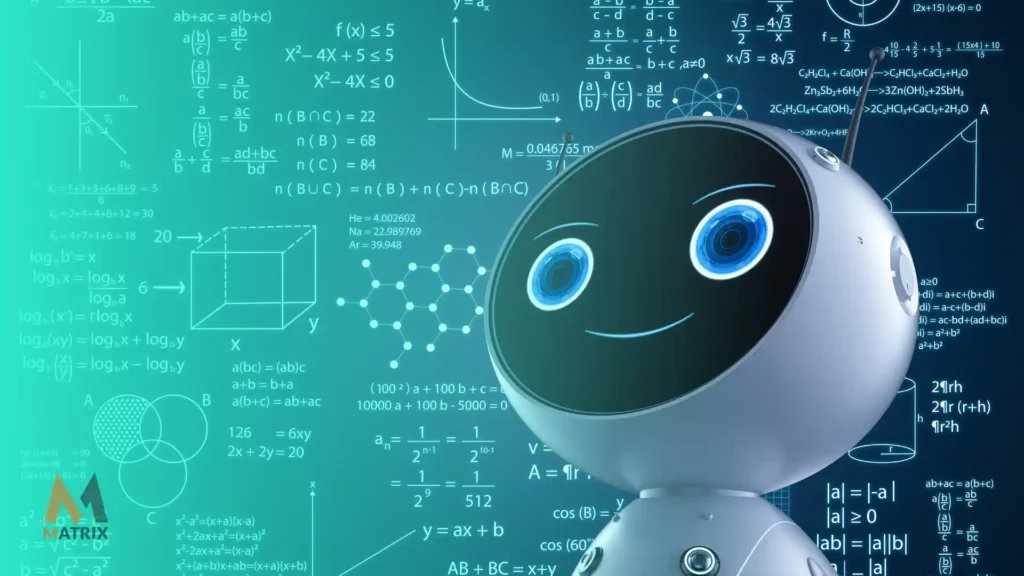
Using AI to Simplify and Streamline Processes
As we look to the future of business, one thing becomes clear: AI is here to stay. The power and flexibility of machine learning algorithms can simplify and streamline processes in ways we never thought possible.
Whether managing a logistics operation, automating financial transactions, or optimizing your supply chain, AI can help reduce wasted time, errors, and overall efficiency.
But get started quickly – the companies that embrace AI today will be the most prepared to succeed tomorrow. So take a leap of faith and let AI simplify your processes today.
Adapting Your Business Model to Maximize Results Through A.I. Automation
In today’s fast-paced world, businesses must constantly adapt and innovate to stay ahead. One of the most impactful ways to do this is through automation.
Integrating technology into your business model allows you to streamline processes, reduce errors, and maximize results. There needs to be more than just automation as an afterthought – you need to be intentional and strategic in your approach.
With a confident and authoritative mindset, you can identify the areas of your business that would benefit most from automation and create a plan to implement it quickly and efficiently.
The urgency to do so is real, as businesses that hesitate to adapt risk falling behind their competitors. Take advantage of the potential benefits of automation – take action now to optimize your business model and achieve greater success.
25 Things Every Business Should Automation

25 Things Every Business Should Automation
In today’s fast-paced world, businesses must remain efficient to stay ahead of their competition. Automation is the key to unlocking productivity gains businesses need to improve their bottom line.
There are 25 things that every business should automate to stay ahead of the game. From customer relationship management to accounting and finance tasks, automating your business processes frees your team to focus on more strategic activities.
In addition to boosting productivity, automation allows companies to reduce errors and minimize rework, saving them time and money in the long run. With the right tools and technologies, businesses can achieve operational excellence, stay ahead of their competition, and build a better future for themselves and their stakeholders.
The time to automate is now, and those who don’t will be left behind. So, what are the best tasks to automate today?
The New Automation Mindset is a revolution in the process of change management. Businesses can realize tremendous benefits and increased efficiency by re-imagining automation and deploying leadership blueprints for an age when anyone can automate anything with AI.
Leaders must evaluate resources to ensure the best outcome through AI-based automation while simplifying and streamlining processes. It is important to leverage the different elements of their business model to maximize results through automation.
Here are 25 things that every business should consider automating for automated success. While this article serves as an introduction to the new mindset, there is much more that businesses need to know about creating an effective ideas customer profile for lead generation, so don’t wait– read more now!
- Email Marketing: Automate email campaigns and customer follow-ups to maintain consistent and personalized communication.
- Social Media Posting: Automation tools can schedule regular posts and updates in advance.
- Customer Relationship Management (CRM): Automate the process of tracking interactions and sales with customers.
- Inventory Management: Automate the tracking of stock levels, orders, sales, and deliveries.
- Invoicing and Payments: Automated billing systems can send invoices and reminders and even process payments.
- Payroll: Automating payroll can save time, reduce errors, and ensure compliance with tax laws.
- Expense Tracking: Automation can help businesses keep track of expenses for budgeting and tax purposes.
- Data Backup and Recovery: Regular automated backups can prevent data loss.
- Cybersecurity: Automated systems can detect and respond to threats faster than humans.
- HR Processes: Automate job postings, applicant tracking, onboarding, and offboarding.
- Customer Support: Use chatbots and automated ticketing systems to provide 24/7 support.
- Sales Reports and Analytics: Automated reporting can provide real-time data and insights.
- Quality Assurance Testing: Automation can help identify bugs and issues in software and digital products.
- Project Management: Automate task assignments, tracking, and updates.
- Scheduling: Automate appointment settings, reminders, and reschedules.
- Task Delegation: Use automation to assign tasks to employees based on their workload, skills, or availability.
- Market Research: Use automation to gather and analyze market data.
- Survey Distribution and Analysis: Automate sending surveys and analyzing results to gain insights.
- Content Creation and Distribution: Automate blog posting, curation, and distribution.
- Search Engine Optimization (SEO): Automate keyword tracking and reporting.
- Contract and Document Management: Automation can help track, sign, and store important documents.
- Feedback Collection: Automated systems can collect and analyze customer feedback.
- Employee Performance Tracking: Automation can help track performance metrics and provide feedback.
- Compliance Monitoring: Automated systems can ensure compliance with regulations and standards.
- Supplier and Order Management: Automate supplier communication, order placements, and tracking.
Matrix Marketing Group is perfect for AI digital marketing services because they have a team of experienced professionals who are experts in using AI to improve the effectiveness of marketing campaigns. They have a proven track record of success in helping businesses of all sizes achieve their marketing goals.
Here are some reasons why Matrix Marketing Group is perfect for AI digital marketing services:
- They have a team of experienced professionals who are experts in using AI to improve the effectiveness of marketing campaigns.
- They have a proven track record of success in helping businesses of all sizes achieve their marketing goals.
- They offer a wide range of AI-powered marketing services, including
- Data analysis
- Campaign management
- Reporting
- Personalization
- Targeting
- They are committed to using AI responsibly and ethically.
Suppose you are looking for an AI digital marketing agency involved with OpenAI, Bard, PaLM 2, Magi, and Jasper.ai, among other A.I. technologies that can help you achieve your marketing goals. In that case, Matrix Marketing Group is the perfect choice for you.
I advise being careful with the buzzwords already being created by businesses. Here are some doozies:
- Plasticity: A Growth Mindset
- Democratization: A Scale Mindset
- SMARTAI
Google Wars with A.I. – You Should Understand
Artificial intelligence (AI) is a branch of computer science that deals with creating intelligent agent systems that can reason, learn, and act autonomously. AI has been used in various applications, including natural language processing, image recognition, and robotics.
PaLM 2 and OpenAI are two of the most advanced AI systems in the world. PaLM 2 is a language model developed by Google AI, while OpenAI is a language model developed by OpenAI. Both systems are trained on massive datasets of text and code, and they can perform a wide range of tasks, including natural language understanding, natural language generation, coding, and reasoning.
There are a few key differences between PaLM 2 and OpenAI. PaLM 2 is larger and more powerful than OpenAI, with 540 billion parameters compared to OpenAI’s 175 billion parameters. PaLM 2 can learn more complex patterns and perform more challenging tasks. PaLM 2 is also trained on a more diverse text and code dataset, giving it a broader understanding of the world.
Another key difference between PaLM 2 and OpenAI is their approach to reasoning. PaLM 2 uses a more traditional approach to reasoning based on logic and rules. OpenAI, on the other hand, uses a more neural network-based approach to reasoning, which is more flexible but also less precise.
PaLM 2 and OpenAI are powerful AI systems with a wide range of capabilities. PaLM 2 is larger and more powerful than OpenAI and is trained on a more diverse dataset of text and code. OpenAI, on the other hand, uses a more neural network-based approach to reasoning, which is more flexible but less precise.
Here is a table that summarizes the key differences between PaLM 2 and OpenAI:
| Feature | PaLM 2 | OpenAI |
|---|---|---|
| Parameters | 540 billion | 175 billion |
| Dataset | A larger, more powerful, broader understanding of the world | More Diverse |
| Reasoning approach | Traditional | Neural network-based |
| Strengths | Larger, more powerful, broader understanding of the world | More flexible, less precise |
| Weaknesses | Less flexible, more precise | Larger, more expensive |
PaLM 2 and OpenAI are both large language models (LLMs) that have been trained on massive datasets of text and code.
They can perform a wide range of tasks, including natural language understanding, natural language generation, coding, and reasoning. However, there are some key advantages that PaLM 2 has over OpenAI.
One of the biggest advantages of PaLM 2 is its size. PaLM 2 has 540 billion parameters, while OpenAI only has 175 billion parameters. PaLM 2 can learn more complex patterns and perform more challenging tasks.
For example, PaLM 2 can translate languages more accurately than OpenAI and generate more creative and informative text.
Another advantage of PaLM 2 is that it is trained on a more diverse dataset of text and code. PaLM 2 is trained on a dataset that includes books, articles, code, and other forms of human language. This gives PaLM 2 a broader understanding of the world, which makes it more capable of performing tasks that require common sense or world knowledge. For example, PaLM 2 can answer questions about history, science, and current events more accurately than OpenAI.
PaLM 2 is more efficient than OpenAI. Much more efficient in our tests. PaLM 2 can perform tasks more quickly and uses less energy than OpenAI. Good for the planet. This makes PaLM 2 more scalable and more cost-effective to use.
PaLM 2 has several advantages over OpenAI. PaLM 2 is larger, more powerful, and more efficient than OpenAI. It is also trained on a more diverse text and code dataset, giving it a broader understanding of the world. As a result, PaLM 2 can perform a wider range of tasks more accurately and efficiently than OpenAI.
Ultimately, the best AI system for a particular task will depend on the specific requirements of that task. PaLM 2 is a good choice for tasks that require a broad understanding of the world and the ability to perform complex reasoning. OpenAI is a good choice for tasks that require flexibility and the ability to adapt to new situations.
Google Magi is a new artificial intelligence (AI) project
Google Magi is a new artificial intelligence (AI) project still being developed. Google AI is creating it to be a more powerful and versatile version of Google Assistant. Magi is being trained on a massive dataset of text and code, and it is expected to perform a wide range of tasks, including:
- Natural language understanding: Magi will be able to understand and respond to natural language queries comprehensively and informally.
- Natural language generation: Magi can generate text, translate languages, write different kinds of creative content, and answer your questions informally.
- Coding: Magi can generate, debug, and write creative code.
- Reasoning: Magi will be able to reason about the world and answer your questions in a comprehensive and informative way, even if they are open-ended, challenging, or strange.
Magi is still under development, but it has the potential to revolutionize the way we interact with computers. It could be used to create more natural and engaging user interfaces, to automate tasks, and generate creative content.
Here are some of the potential benefits of Google Magi:
- More natural and engaging user interfaces: Magi could be used to create more natural and engaging user interfaces for various applications, such as search, voice assistants, and chatbots. For example, Magi could be used to create a search engine that can understand and respond to natural language queries in a comprehensive and informative way.
- Automated tasks: Magi could automate various tasks, such as data entry, customer service, and marketing. This could free human workers to focus on more creative and strategic tasks.
- Creative content: Magi could generate creative content, such as poems, stories, and music. This could be used to create new forms of entertainment and improve existing content quality.
Overall, Google Magi has the potential to revolutionize the way we interact with computers. It could be used to create more natural and engaging user interfaces, to automate tasks, and to generate creative content.
Case Study: AI-Driven Digital Marketing Transformation for ABB Manufacturing
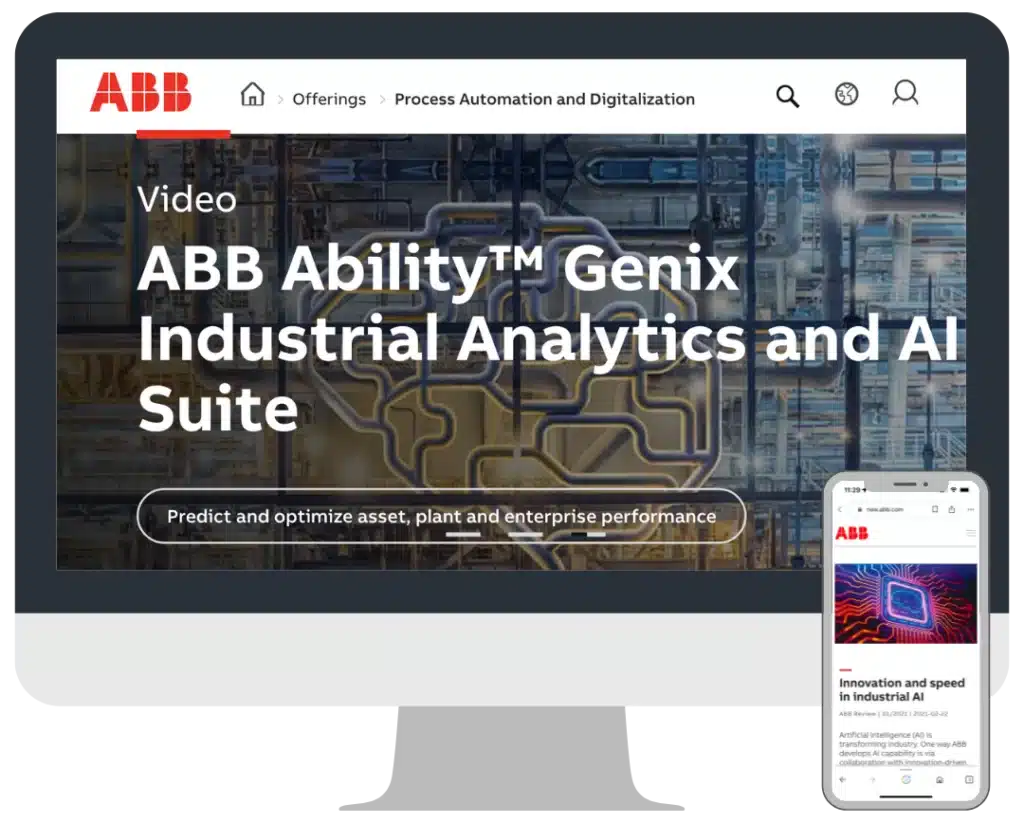
Background
ABB Manufacturing, a well-established manufacturing company, faced challenges with its digital marketing efforts.
Despite having a strong product portfolio and a loyal customer base, the company struggled to reach new customers and expand its market share online.
The company’s marketing efforts were largely traditional, and its digital marketing strategies were underdeveloped and failed to deliver desired results.
Problem
The primary issue was that ABB Manufacturing’s marketing needed to be personalized or targeted. Their broad, generic campaigns needed the personal touch that today’s consumers expect from online interactions.
The company also needed help tracking and analyzing its digital campaign performance. As a result, they could not optimize their marketing strategies or allocate their resources effectively.
AI-Driven Digital Marketing Solution
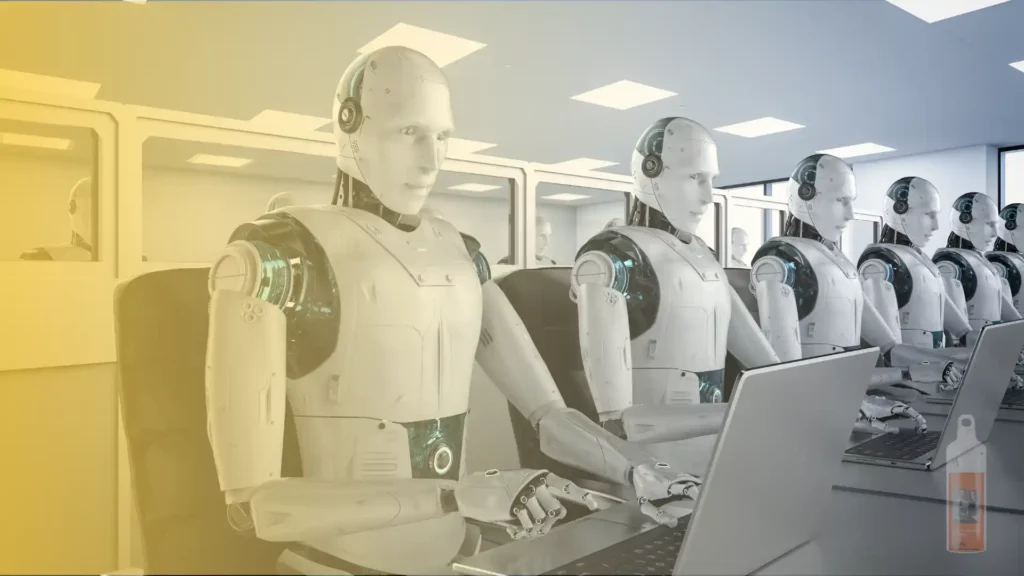
ABB Manufacturing adopted an AI-driven digital marketing approach to address these challenges.
They partnered with an AI solution provider who helped them implement AI tools to enhance digital marketing efforts.
- Predictive Analytics: The company used AI to analyze customer data and predict future behaviors. This allowed them to identify high-value customers and focus their marketing efforts on these individuals.
- Personalization: AI was used to personalize the company’s marketing messages based on customer preferences and behaviors. This included personalized email campaigns, website content, and product recommendations.
- Chatbots: The company implemented AI-powered chatbots on its website to provide 24/7 customer service. These chatbots could answer common questions, guide customers through buying, and even upsell and cross-selling products.
- Social Media Monitoring: AI tools were used to monitor social media channels and identify trends and sentiments about the company and its products. This provided valuable insights that the company used to improve its products and marketing strategies.
- Optimization: AI was used to track the performance of digital marketing campaigns in real time. This allowed the company to identify and address issues quickly and optimize campaigns for better performance.
Let us know if you need a copy of our Python automation scripts for beginners guide.
Results
ABB Manufacturing significantly enhanced its digital marketing efforts by adopting an AI-driven digital marketing approach. They saw increased online sales, customer engagement, and overall brand awareness.
The company’s personalized marketing campaigns led to higher customer satisfaction and loyalty.
Moreover, the real-time insights provided by AI allowed the company to make more informed decisions, optimize its marketing strategies, and achieve a better return on its marketing investments.
This case study demonstrates the transformative potential of AI in digital marketing. By leveraging AI, ABB Manufacturing overcame its marketing challenges and achieved significant business growth.
It underscores that with the right tools and strategies, even traditional companies can successfully navigate digital transformation and thrive in the digital age.
Conclusion
The new AI automation mindset shifts from seeing automation as a threat to seeing it as an opportunity. It is a mindset that embraces the power of AI to automate tasks and processes, freeing humans to focus on more creative and strategic work.
This new mindset is essential for businesses that want to stay ahead of the competition. In today’s rapidly changing world, businesses need to be able to adapt quickly and efficiently. AI automation can help businesses automate repetitive, time-consuming, or error-prone tasks. This frees up employees to focus on more strategic and creative work, which can lead to innovation and growth.
In addition to improving efficiency, AI automation can improve quality and accuracy. AI systems can be programmed to follow strict guidelines and procedures, which can help to ensure that tasks are completed correctly. This is especially important for tasks critical to a business’s success, such as financial reporting or customer service.
Of course, AI automation is not without its challenges. One challenge is that AI systems can be expensive to develop and implement. Another challenge is that AI systems can be complex and difficult to use. However, the benefits of AI automation far outweigh the challenges.
The mindset of AI for CMOs is new for them. So, there are years of learning. AI Marketing Plan for Manufacturing Businesses
By adopting a new AI automation mindset, businesses can position themselves for success in the 21st century. Automating tasks and processes frees employees to concentrate on more creative and strategic work, facilitating innovation, growth, and a competitive edge.
Here are some additional benefits of the new AI automation mindset:
- Increased productivity: AI automation can help increase productivity by automating repetitive, time-consuming, or error-prone tasks. This frees up employees to focus on more strategic and creative work.
- Improved quality: AI systems can be programmed to follow strict guidelines and procedures, which can help to ensure that tasks are completed correctly. This is especially important for tasks critical to a business’s success, such as financial reporting or customer service.
- Reduced costs: AI automation can help to reduce costs by automating tasks that humans currently perform. This can lead to savings on labor costs, benefits, and training. How to Use AI Digital Marketing to Transform Your Marketing Results
- Improved customer service: AI systems can provide 24/7 customer service. This can help businesses to improve customer satisfaction and loyalty.
- Increased innovation: AI automation can help businesses to innovate by freeing up employees to focus on more creative and strategic work. This can lead to new products, services, and business models.
The new AI automation mindset is a powerful tool to help businesses improve their performance and competitiveness. By embracing this mindset, businesses can be successful in the 21st century. Ask us for the AI automation mindset ppt. AI Marketing Plan for Manufacturing Businesses
General FAQs
What is the New AI Automation Mindset?

The New Automation Mindset is an advanced form of change management that enables businesses to realize maximum efficiency, productivity, and increased profits by implementing AI-based automation. By leveraging the different elements of their business model and deploying leadership blueprints, companies can simplify and streamline processes while optimizing results.
What are the Benefits of Automating?

Automation offers many benefits, including improved productivity, reduced errors and rework costs, faster decision-making, and greater customer satisfaction. In addition to these benefits, businesses can save time and money by automating mundane or repetitive tasks to allocate their resources more strategically.
How Can I Start Automating My Business Processes?
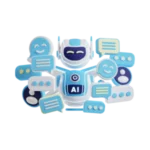
The first step in the automation process is identifying which areas of your business could benefit most. Once you have identified those areas, you should create a plan for implementing AI-based automation tools into your processes. Evaluating your available resources and choosing the best tools for your specific needs is also important.
What Are The Different Types Of Automation Technologies?

There are many different types of automation technologies available, including robotic process automation (RPA), machine learning (ML), and artificial intelligence (AI). Each technology has unique advantages and can automate different aspects of a business’s operations. You can select the appropriate technology for your particular situation depending on your needs and budget.

